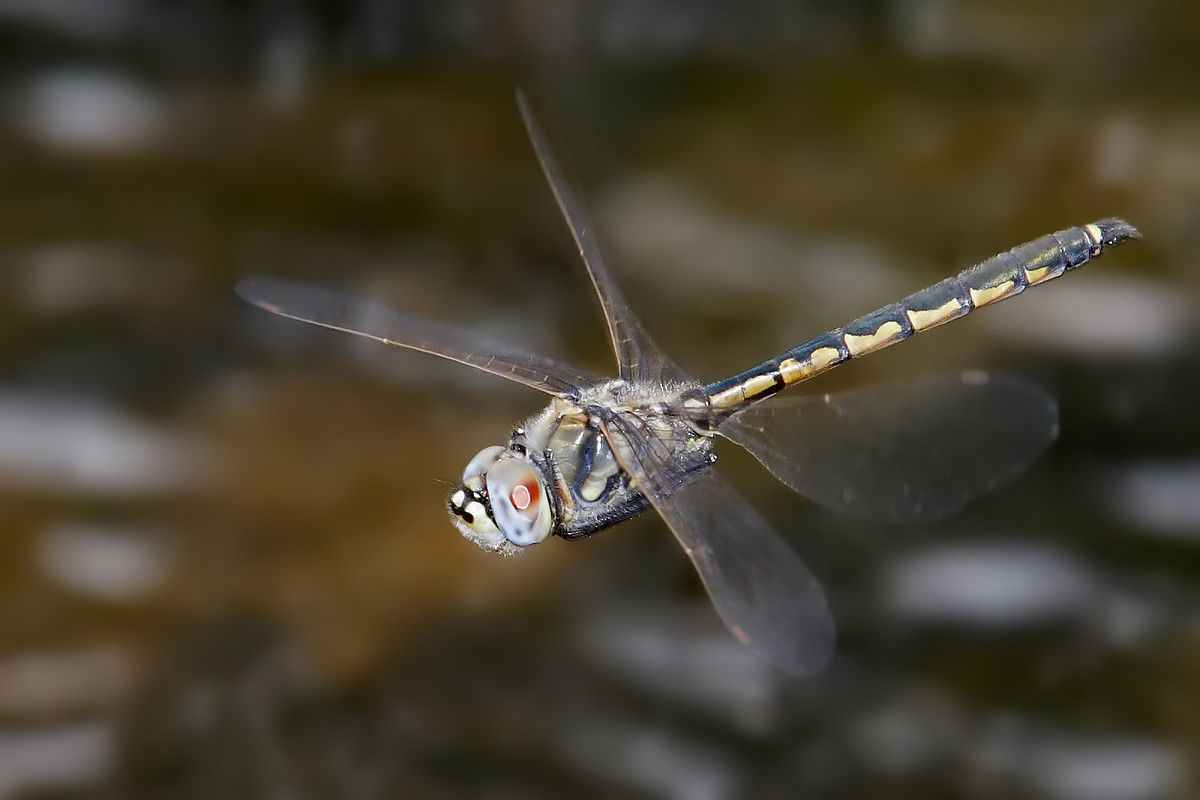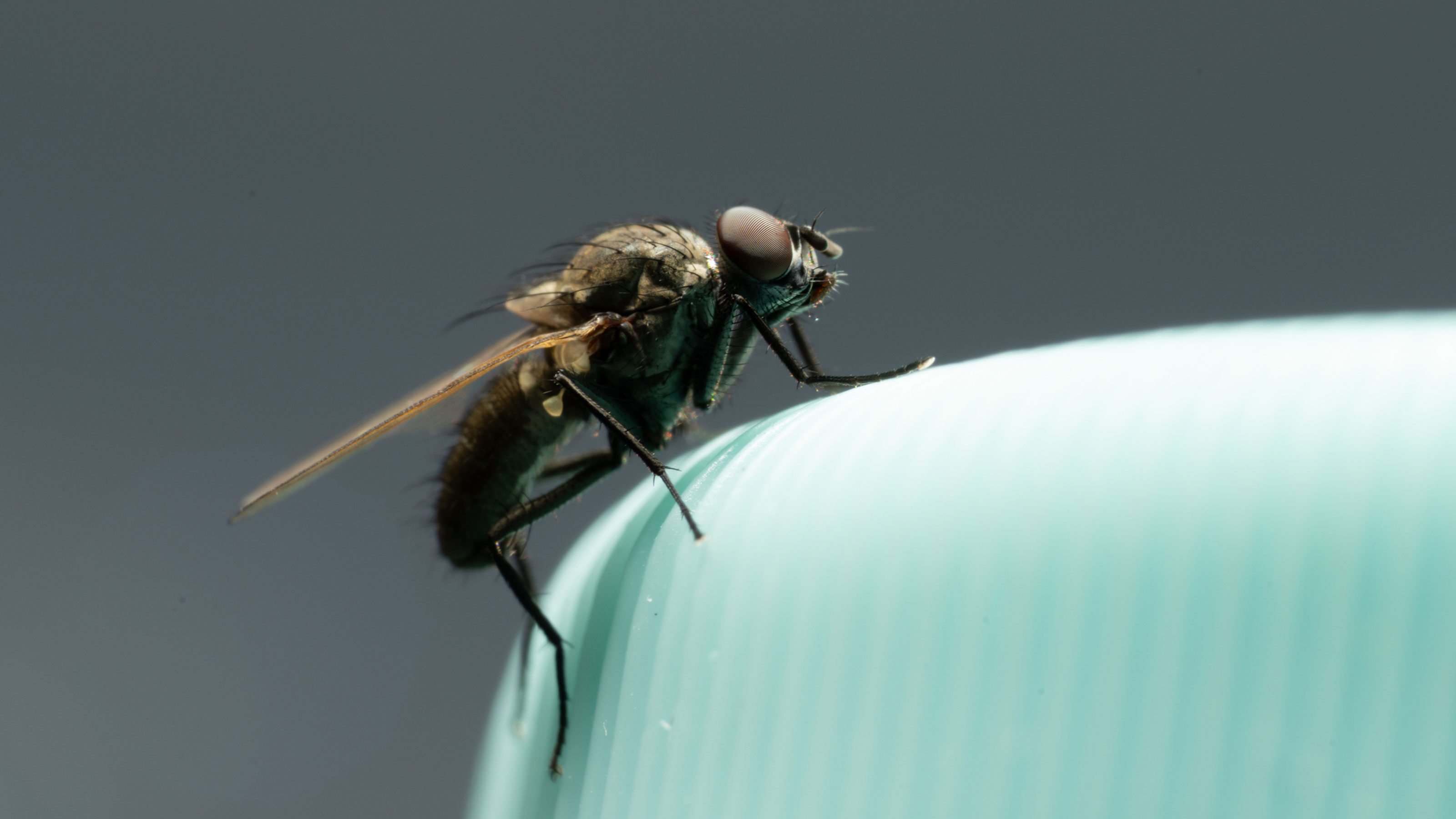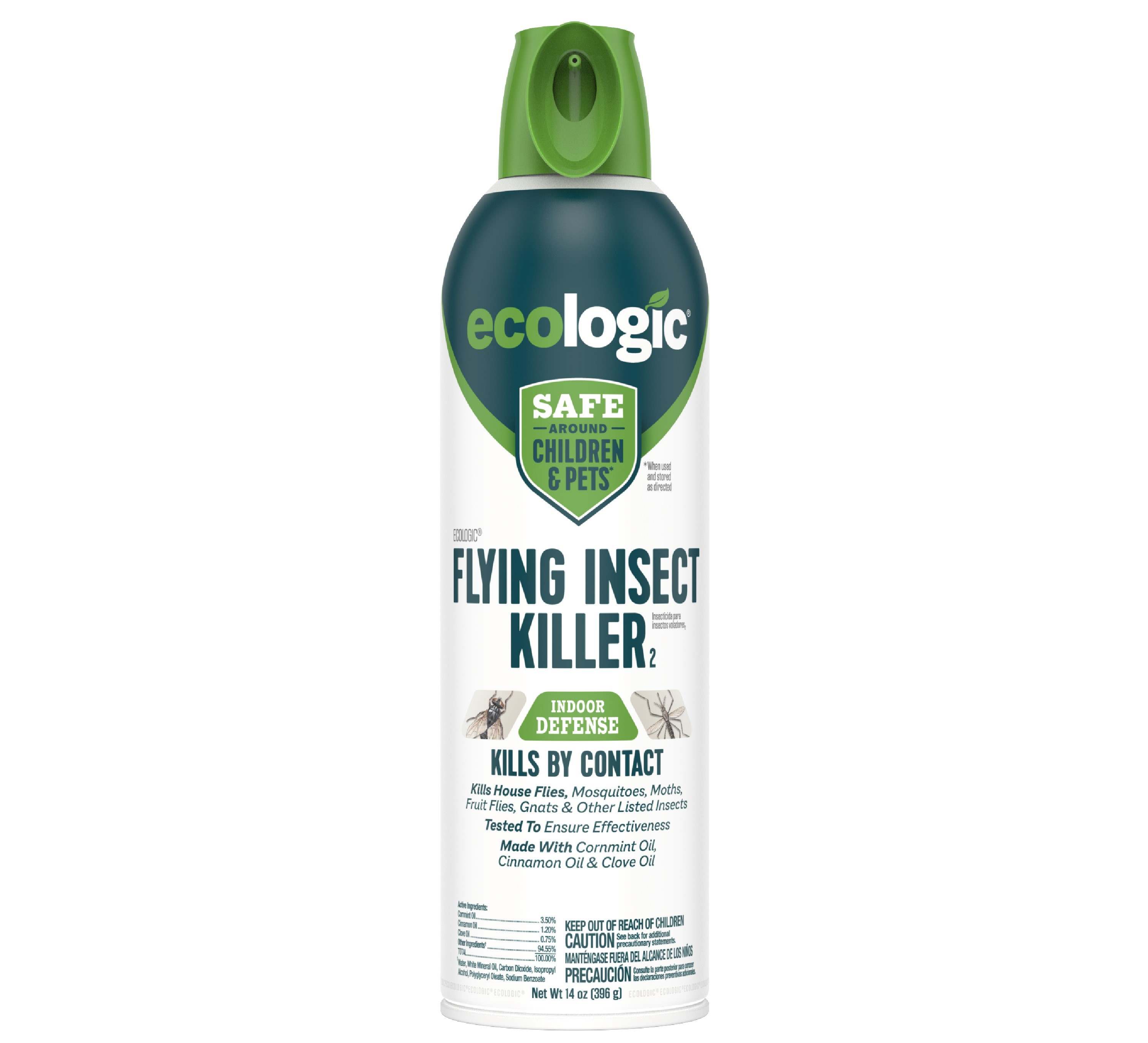Home>Gardening News and Trends>Latest News>What Insects Fly


Latest News
What Insects Fly
Modified: January 22, 2024
Discover the latest news on what insects fly and explore their fascinating behaviors and adaptations. Stay updated with the most recent research findings in the world of entomology.
(Many of the links in this article redirect to a specific reviewed product. Your purchase of these products through affiliate links helps to generate commission for Chicagolandgardening.com, at no extra cost. Learn more)
Table of Contents
Introduction
Flying insects have long fascinated and intrigued scientists and nature enthusiasts alike. From delicate butterflies fluttering in gardens to industrious bees buzzing from flower to flower, the world of flying insects is incredibly diverse and vital to our ecosystem. In this article, we will explore the wide array of flying insects, their unique characteristics, adaptations for flight, and the intriguing anatomy of their wings. We will also delve into how these remarkable creatures navigate and fly, and highlight some of the exceptional flying abilities exhibited by certain insects. Additionally, we will examine the fascinating phenomenon of insects that mimic flying and discuss the crucial role that flying insects play in our environment.
The sheer number and variety of flying insects is astonishing. They can be found in almost every habitat on Earth, from the depths of the rainforest to the highest mountain peaks. Flying insects belong to various taxonomic groups, including butterflies, moths, bees, wasps, flies, and beetles, to name just a few. Each group possesses distinct characteristics and adaptations that enable them to take flight and perform their essential ecological roles.
Flight is a remarkable feat for any organism, and it is no exception for insects. The ability to fly grants insects numerous advantages in terms of finding food, escaping predators, and locating suitable mates. Over millions of years, flying insects have evolved specialized physical features and behaviors that allow them to excel in the art of flight.
One of the most fascinating aspects of flying insects is the intricate anatomy of their wings. Unlike the single pair of wings found in most flying animals, insects have two pairs of wings attached to their thorax. The structure and movement of these wings vary greatly among different insect species, and studying them provides valuable insights into the mechanics of flight.
Now, let’s delve into the captivating world of flying insects and explore the mesmerizing adaptations and behaviors that enable them to take flight, navigate their surroundings, and fulfill their crucial ecological roles.
Types of Flying Insects
Flying insects encompass a wide range of species, each with its own unique characteristics and ecological niche. Here are some of the most prominent types of flying insects:
- Butterflies and Moths: These enchanting insects belong to the order Lepidoptera and are known for their brilliant colors and delicate wings. Butterflies are typically diurnal, meaning they are active during the day, while moths are typically nocturnal. They play a crucial role in pollination and are often associated with flowers and plants.
- Bees and Wasps: Bees and wasps belong to the order Hymenoptera and are well-known for their ability to sting. Bees are essential pollinators, facilitating the transfer of pollen from one flower to another, while wasps are predators, hunting other insects. Both bees and wasps play critical roles in maintaining ecosystem balance.
- Flies: Flies, belonging to the order Diptera, are highly diverse and can be found in various habitats worldwide. They are characterized by a single pair of wings, unlike other flying insects. Flies are significant pollinators, decomposers, and disease vectors, making them crucial components of ecosystems.
- Dragonflies and Damselflies: Dragonflies and damselflies belong to the order Odonata and are known for their incredible flying skills and predatory behavior. They have large multifaceted eyes, elongated bodies, and transparent wings. These insects are adept hunters and play a vital role in controlling populations of smaller insects.
- Beetles: Beetles, belonging to the order Coleoptera, are the most diverse group of insects, with over 350,000 known species. While not all beetles are capable of flight, many possess wings that allow them to take to the air. Beetles are crucial for pollination, decomposition, and serving as a food source for other organisms.
- Mosquitoes: Mosquitoes, belonging to the family Culicidae, are infamous for their ability to transmit diseases such as malaria, dengue fever, and Zika virus. Only female mosquitoes bite, as they require a blood meal for egg development. Male mosquitoes feed on nectar and contribute to pollination.
- Ants: Although ants are best known for their ability to crawl, some species possess wings and can take flight during certain times of the year. These winged ants participate in the reproductive process, mating in the air before establishing new colonies. Ants are essential for seed dispersal and soil aeration.
These are just a few examples of the incredible diversity of flying insects. Each type plays a vital role in ecosystems, serving as pollinators, decomposers, predators, or prey. The intricate interactions between these insects and their environment create a delicate balance that supports life on Earth.
Characteristics of Flying Insects
Flying insects possess a range of unique characteristics that enable them to adapt to their aerial lifestyle:
- Lightweight and Compact: Flying insects have streamlined bodies that are lightweight and compact, allowing for efficient movement through the air. Their exoskeletons, made of a tough, lightweight substance called chitin, provide structural support while minimizing weight.
- Wings and Flight Muscles: Most flying insects have two pairs of wings attached to their thorax. These wings are typically long and membranous, with intricate venation patterns that provide strength and flexibility. The flight muscles of insects are unique in that they are directly attached to the wings, allowing for precise and rapid wing movements.
- Metamorphosis: Many flying insects, such as butterflies and moths, undergo a complete metamorphosis, which includes distinct stages of egg, larva (caterpillar), pupa (chrysalis or cocoon), and adult. This transformation allows for specialized adaptations in each stage and helps optimize survival and reproduction.
- Compound Eyes: Flying insects typically possess large compound eyes, which are made up of numerous individual photoreceptor units called ommatidia. These eyes provide a wide field of vision and excellent motion detection, crucial for navigation and avoiding obstacles while in flight.
- Tactile and Olfactory Sensitivity: Flying insects also rely on other senses, such as touch and smell, to navigate and locate resources. They have sensory hairs on their bodies and appendages, allowing them to detect vibrations and touch. Additionally, their antennae are equipped with olfactory receptors to detect chemical signals in the environment.
- Rapid Reproduction: Many flying insects have short lifespans and reproduce rapidly, ensuring the survival of their species. This reproductive strategy allows them to adapt quickly to changing environmental conditions.
The combination of these characteristics enables flying insects to take advantage of the aerial environment and fulfill their ecological roles. By being lightweight, agile, and equipped with specialized sensory organs, they can efficiently find food, locate mates, avoid predators, and disperse to new habitats. These adaptations have helped flying insects successfully colonize diverse ecosystems and thrive in various environments around the world.
Adaptations for Flight
Flying insects have evolved numerous adaptations to master the art of flight. These adaptations enable them to maneuver through the air with precision and efficiency. Here are some key adaptations:
- Wings: The most essential adaptation for flight in insects is the presence of wings. Insects have two pairs of wings, which are thin, lightweight, and covered in tiny scales. These wings provide the necessary surface area to generate lift and allow insects to stay aloft.
- Wing Veins and Cross-Veins: Wing veins and cross-veins provide structural support and strength to the delicate wings. These intricate patterns of veins help distribute stress and reinforce the wings, allowing them to withstand the forces generated during flight.
- Muscle Structure: Insect flight muscles are unique as they are attached directly to the wings, allowing for rapid and precise wing movements. The muscles contract and relax rapidly, generating the necessary power to move the wings back and forth to create lift and thrust. This direct muscle attachment provides insects with exceptional control over their flight.
- High Metabolic Rate: To support the energy demands of flight, flying insects have high metabolic rates. They have specialized adaptations in their respiratory and digestive systems to efficiently extract and utilize energy from their food sources.
- Balancing Mechanisms: Insects have evolved mechanisms to maintain stability and balance during flight. They possess specialized sensory organs called halteres, which act as gyroscopic stabilizers, providing information about the insect’s body movements and position in space.
- Navigational Abilities: Flying insects often have remarkable navigational abilities, relying on celestial cues, landmarks, and even the Earth’s magnetic field to orient themselves in their environment. Some species of bees and butterflies, for example, can perform impressive migration journeys.
These adaptations collectively allow flying insects to perform intricate flight maneuvers, such as hovering, gliding, and rapid changes in direction. Whether it’s the delicate fluttering of a butterfly or the acrobatic precision of a dragonfly, these adaptations ensure that flying insects are incredibly efficient and graceful in the air. Adaptations for flight have not only enabled their survival and success but also contributed to the incredible diversity and ecological importance of these remarkable creatures.
The Anatomy of Insect Wings
The wings of flying insects are marvels of natural engineering, perfectly adapted to allow for efficient flight. Let’s explore the anatomy of insect wings and the fascinating features that enable them to perform their aerial feats.
Insect wings are composed of a thin, transparent membrane known as the wing blade. This membrane is supported and reinforced by a network of veins and cross-veins that give the wings their shape, strength, and flexibility. The venation pattern of insect wings varies among different species and plays a crucial role in their flight characteristics.
The main veins, called longitudinal veins, run along the length of the wing and provide primary support. These veins are thicker and more rigid compared to the cross-veins. Cross-veins, as the name suggests, connect the longitudinal veins and form a lattice-like network within the wing. They provide additional strength and allow for more controlled wing movements.
Wing venation patterns can be intricate and exhibit variations across species. Some insects have a few large veins that divide the wing into distinct sections, while others have numerous small veins that give their wings a fine mesh-like appearance.
In addition to the veins, the leading edge of the wing, known as the costa, is typically reinforced to provide extra rigidity. This reinforcement allows for a steady airflow over the wing, reducing turbulence and providing stability during flight.
Furthermore, the wings of flying insects are incredibly lightweight. They consist of a thin cuticle, composed mostly of chitin, a strong and flexible substance that makes up the exoskeleton of insects. The lightweight nature of insect wings is crucial for minimizing energy expenditure during flight and maximizing maneuverability.
Unlike the wings of most vertebrates, the wings of insects can undergo rapid and complex movements. Insect flight muscles are directly attached to the wings, allowing for precise control and coordination. By contracting and relaxing these muscles in an intricate pattern, insects can generate the lift and thrust needed to propel themselves through the air.
The incredible adaptability and structure of insect wings have facilitated the evolution of diverse flying abilities among different species. From the gentle gliding of butterflies to the rapid and agile flight of bees and dragonflies, the complexity and efficiency of insect wing anatomy are fundamental to their success in the aerial realm.
How Insects Navigate and Fly
Insects have developed remarkable abilities to navigate their environments and perform intricate flight maneuvers. These skills are crucial for their survival, ensuring they can find food, locate mates, and avoid predators. Let’s explore how insects navigate and fly with such precision and efficiency.
One of the primary ways insects navigate is by relying on visual cues. They have large compound eyes that provide a wide field of vision, allowing them to detect objects and movements in their surroundings. Insects can perceive and interpret patterns of light and color, enabling them to recognize landmarks, find food sources, and locate potential mates.
In addition to visual cues, some flying insects, such as bees and butterflies, have a remarkable ability to sense and utilize celestial cues. They can detect and orient themselves with respect to the position of the sun or use the polarization of light to navigate accurately. This celestial navigation is particularly useful for long-distance migration or foraging in unfamiliar territory.
Insects also rely on their sense of smell to navigate and find resources. Their antennae are equipped with olfactory receptors, allowing them to detect and follow chemical trails produced by food sources, potential mates, or suitable habitats. Some insects, such as bees, can even communicate with each other through complex pheromone signals.
To maintain stability during flight, insects have developed specialized mechanisms. They use sensory organs called halteres, which are modified hindwings, to provide feedback on body movements and maintain balance. Halteres act as gyroscopic stabilizers, helping insects adjust their wing movements and maintain a stable flight path.
Flight in insects is a complex process that involves rapid wing movements. The contraction and relaxation of flight muscles, which are directly attached to the wings, generate the necessary lift and thrust. By varying the frequency and amplitude of their wing beats, insects can control their flight speed, direction, and maneuverability.
Certain flying insects, such as dragonflies, are renowned for their exceptional flying abilities. They can hover in mid-air, fly backwards, and perform acrobatic aerial maneuvers with incredible precision. Their wings can move independently, allowing them to make rapid adjustments and change direction swiftly.
Collectively, these navigational and flight adaptations enable insects to explore and exploit different habitats, optimize foraging efforts, and successfully reproduce. Their ability to navigate and fly with such versatility has allowed insects to thrive in diverse environments and play vital roles in pollination, seed dispersal, pest control, and decomposition.
Unique Flying Abilities of Insects
Insects have evolved a multitude of fascinating and unique flying abilities that set them apart from other flying organisms. These remarkable adaptations enable insects to perform extraordinary feats in the air. Let’s delve into some of the most intriguing and awe-inspiring flying abilities exhibited by these small but mighty creatures.
1. Hovering: Some insects, such as certain species of bees, hover in mid-air with remarkable stability. They achieve this by rapidly beating their wings, creating a “helicopter-like” motion. This ability allows them to hover over flowers for extended periods, extracting nectar or collecting pollen.
2. Gliding: Certain insects, like flying squirrels and some species of ants, have the ability to glide through the air. They use specialized adaptations, such as flat or wing-like appendages, to control their descent and navigate between trees or other elevated areas. Gliding helps these insects search for food, escape predators, or establish new colonies.
3. Stinging Flight: Bees and wasps are notorious for their ability to sting, but what’s particularly remarkable is their capability to sting while in flight. They can fly swiftly and accurately towards their target, delivering a precise sting before quickly moving away. This aerial defense mechanism is critical for protecting the colony and themselves.
4. Complex Movements: Some insects display incredibly complex flight patterns. Take the mating flight of male dance flies, for example. These flies engage in elaborate aerial dances, where they perform intricate flight maneuvers to attract females. The display involves quick direction changes, figure-eight flights, and synchronized movements.
5. Optimal Pollination: Certain flying insects, like bees and butterflies, have evolved specialized adaptations for efficient and effective pollination. They possess long tongues or proboscises that can reach into flowers to access nectar. As they feed, pollen inadvertently sticks to their bodies and is transported between flowers, facilitating the pollination process.
6. Migration: Many species of insects undertake impressive migration journeys, covering vast distances in search of suitable habitats or breeding grounds. Monarch butterflies, for instance, are known for their long-distance migratory flights, traveling thousands of miles between North America and Mexico. These migrations are crucial for their survival and contribute to the genetic diversity of their populations.
These remarkable flying abilities highlight the incredible adaptability and versatility of insects. From hovering and gliding to complex flight patterns and long-distance migrations, insects have evolved an astonishing range of techniques to navigate their environments, find resources, evade predators, and reproduce successfully.
Insects That Mimic Flying
Some insects have evolved the remarkable ability to mimic the appearance or behavior of flying organisms, allowing them to deceive predators, gain protection, or enhance their feeding strategies. This fascinating phenomenon, known as mimicry, is prevalent in the insect world and has led to the development of various adaptive strategies. Let’s explore some examples of insects that mimic flying creatures and the advantages it provides.
1. Bee and Wasp Mimics: Several harmless insects, such as hoverflies and bee flies, mimic the appearance of bees and wasps. They have similar colors, markings, and body shapes, which effectively deters potential predators. By mimicking these stinging insects, they gain protection from predators that might avoid attacking out of fear of being stung.
2. Bird and Bat Mimics: Some moths and butterflies have evolved patterns on their wings that resemble the silhouette or markings of birds or bats. This mimicry aids in predator avoidance, as potential attackers mistake them for larger, threatening creatures. The resemblance to birds or bats may intimidate predators or redirect their attention away from the insects themselves.
3. Ant Mimics: Certain insects, like spider beetles and velvet ants, mimic the appearance and behavior of ants. They have similar body shapes, colors, and movement patterns. By mimicking ants, these insects gain protection from predators and can potentially infiltrate ant colonies undetected, taking advantage of their resources (such as food or shelter) or preying on their larvae.
4. Walking Stick Mimics: Walking sticks are insects that mimic twigs or branches, both in appearance and behavior. They have a long, slender body with adaptations that resemble plant material. This camouflage helps them blend seamlessly into their environment, making it difficult for predators to spot or recognize them as prey.
5. Moth and Leaf Mimics: Some moths and insects, like the dead leaf butterfly and walking leaf insect, have evolved to mimic the appearance of leaves or plant parts. These insects have intricate patterns on their wings or body that resemble dried or live leaves, providing effective camouflage. They rely on their resemblance to avoid detection by predators that may mistake them for vegetation.
Mimicry in insects serves as a remarkable example of how intricate adaptations can allow these creatures to survive and thrive in their respective ecosystems. By imitating the appearance, behavior, or characteristics of other organisms, these insect mimics gain protection, predator avoidance, or increased foraging opportunities. This evolutionary strategy showcases the incredible diversity and ingenuity of the insect world.
Benefits and Importance of Flying Insects
Flying insects play a crucial role in maintaining the balance and functioning of ecosystems. Their presence and activities have numerous benefits and contribute significantly to the overall health of our planet. Let’s explore the importance of flying insects and the invaluable services they provide.
1. Pollination: Flying insects, such as bees, butterflies, and certain flies, are essential pollinators. As they move from flower to flower in search of nectar or pollen, they inadvertently transfer pollen grains, enabling plants to reproduce. This process is vital for the production of fruits, seeds, and the diversity of plant species. Without pollinators, food crops and natural ecosystems would suffer greatly.
2. Seed Dispersal: Many flying insects, like beetles and butterflies, aid in the dispersal of seeds. They inadvertently carry seeds on their bodies while feeding on flowers or fruits, helping to disperse them to new locations. This dispersal ensures the survival and colonization of plant species across different habitats, promoting biodiversity.
3. Nutrient Recycling and Decomposition: Some flying insects, such as dung beetles and carrion beetles, play a crucial role in nutrient recycling and decomposition. They feed on feces, decaying matter, or dead organic material, breaking them down and returning essential nutrients to the soil. This process helps to maintain nutrient cycles, enriching the soil and supporting the growth of plants.
4. Natural Pest Control: Predatory flying insects, including dragonflies, ladybugs, and predatory wasps, act as natural pest controllers. They feed on harmful insects like aphids, caterpillars, and mosquitoes, helping to keep their populations in check. By controlling pest populations, these beneficial insects assist in minimizing crop damage and reducing the need for chemical pesticides.
5. Food Source for Other Animals: Flying insects serve as a significant food source for various other organisms, including birds, bats, reptiles, amphibians, and fish. They form a critical link in the food chain, providing energy and nutrition to higher trophic levels. The abundance and diversity of flying insects directly impact the health of these predator populations and the overall stability of ecosystems.
6. Ecosystem Services: By performing vital ecological services like pollination, nutrient cycling, and pest control, flying insects contribute to the overall health and functioning of ecosystems. They support the growth and diversity of plants, facilitate sustainable agriculture, and help in maintaining the balance of ecological communities.
The benefits and importance of flying insects extend far beyond their individual species. They have a cascading impact on the environment, affecting the health of plants, animals, and the overall stability of ecosystems. Recognizing the value of flying insects and implementing conservation efforts to protect their habitats and populations is crucial for preserving biodiversity and ensuring the continued functioning of ecosystems.
Conclusion
Flying insects captivate us with their remarkable abilities, intricate adaptations, and undeniable importance in our world. From the pollination of plants to the control of pest populations, these small creatures play a vital role in maintaining the delicate balance of ecosystems.
Throughout this article, we have explored the different types of flying insects, their characteristics, adaptations for flight, and the mesmerizing anatomy of their wings. We also discussed how insects navigate their surroundings and highlighted some of the unique flying abilities they possess, such as hovering, gliding, and migration.
Mimicry, another fascinating aspect of insect behavior, showcased how certain insects have evolved to resemble other organisms, gaining protection and increasing their chances of survival.
Undoubtedly, the benefits and importance of flying insects cannot be overstated. Their role in pollination ensures the proliferation of plant species and the production of fruits, seeds, and crops. They aid in nutrient recycling, decomposition, and natural pest control, contributing to the overall health and functioning of ecosystems. Additionally, flying insects serve as a vital food source for numerous other organisms, sustaining the balance and diversity of life.
As we continue to understand and appreciate the significance of flying insects, it becomes imperative to protect and conserve their habitats. Ensuring the preservation of these vital species is crucial for maintaining the ecological services they provide, sustaining biodiversity, and securing our food systems.
Let us marvel at the incredible world of flying insects, and strive to coexist with them harmoniously, recognizing the intricate web of life they are a part of. In doing so, we can preserve the beauty, functionality, and equilibrium of our natural world for future generations to come.










